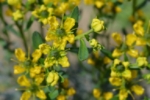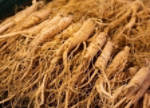 Sciatica and its Homeopathic Management
Sciatica and its Homeopathic Management
Sciatic nerve is the largest nerve in the body which originates from the sacral plexus, formed by the roots (anterior rami) of spinal nerves L4–L5 and S1–S4. Sciatica is a type of Lumbar Radicular Pain (LRP)1 and is the most common form of back pain, caused by compression or irritation of the sciatic nerve. The typical presentation of sciatica is a pain that extends from the buttock down the posterior and lateral aspect of the leg and the lateral aspect of the foot.
Etiological Factors
Sciatica is a symptom of a varied range of nociceptive spinal conditions.The injury to sciatic nerve may result from a herniated (slipped) disc, dislocated hip, osteoarthritis of the lumbosacral spine, pathological shortening of the lateral rotator muscles of the thigh (especially piriformis), pressure from the uterus during pregnancy, inflammation, irritation, or an improperly administeredmuscular injection. In addition, sitting on a wallet or other object for a long period of time can compress the nerve and induce pain.2
Diagnosis
For accurate diagnosis of sciatica proper history taking and physical examination are required as nerve roots from L1 to L4 may also be involved in the same process resembling sciatica. Most of the times patients, use the term sciatica to describe any pain arising from the lower back and radiating down to the leg which can actually bea referred pain from the lower back and occurs without any association to disk herniation or nerve-root compression. It is a crucial point for clinicians to differentiate the radicular pain from the referred pain because the epidemiology, clinical course and, most importantly, therapeutic interventions totally vary for sciatica and other similar type of conditions.3
Physical examination:
To assess the sciatic compromise due to lumbosacral nerve root irritation clinicians perform the following tests:
- Straight leg raise test also called the Lasegue test :It is a fundamental neurological maneuver during the physical examination of the patient with lower back pain who have started complaining of radiating pains down the limb.4
- Knee jerk test and ankle jerk test help in further differentiating the involvement of L4, L5 and S1 nerve roots in the LRP.
Investigations
- Plain X-rays of the lumbar spine are of little value in the diagnosis of lumbar disc disease, although they may show other conditions such as malignant infiltration of a vertebral body.
- CT, especially using spiral scanning techniques, can provide helpful images of the disc protrusion and/or narrowing of the exit foramina.
- MRI is the investigation of choice if available, since soft tissues are well imaged.5
 Prognosis and Treatment
Prognosis and Treatment
The prognosis for acute lumbar radicular pain due to disk herniation is generally favourable, with most patients showing substantial improvement, spontaneously over months. However, various treatment options to provide symptomatic relief are available while the natural healing process unfolds. Studies show that bed rest is ineffective for treating sciatica hence revival of normal activity is recommended.
The conventional mode of treatment of sciatica due to disk herniation includes muscle relaxants, analgesics, corticosteroids, antidepressants and antiepileptics.,7
A recent study throws light on the role of vitamin D3 in treatment of lumbar disk hernia, where references supporting identification of vitamin D receptors in spinal cords, nerve roots, dorsal root ganglia and glial cells have been shared. This paper also projects the association of genetic polymorphism of vitamin D3 and the development of lumbar disc herniation and degeneration and projects the usefulness of vitamin D3 in reducing the severity of discogenic pain (such as sciatica).7
Management
It should emphasize the self-limiting nature of the condition andthe fact that exercise is helpful rather than damaging. Regular pain relieving medicines may be required to improve mobility and facilitates exercise. Return to work and normal activity should take place as soon as possible. Bed rest is not helpful and may increase the risk of chronic disability. Referral for physical therapy should is considered if a return to normal activities has not been achieved by 6 weeks. Other treatment modalities should be considered based on cause of the condition.
Homeopathic medicines are available which help relieve muscular spasm and also pain due to nerve irritation. Medicine selection is done by a homeopath based on symptoms and pathology. Physiotherapy and posture correction have an important role to play in management of sciatica.
 Diet recommended avoiding Sciatica
Diet recommended avoiding Sciatica
- Plant Based Proteins– lentils, beans, nuts, and chia seeds.
- Dairy Products – Improve your bone health and strength with dairy products that are high in calcium, including cheese, milk, and yogurt.
- Herbs and Spices – Turmeric helps fix damaged tissue. Oregano cinnamon, rosemary, basil, and ginger fight inflammation.
- Deep green vegetables – spinach, broccoli, and kale, can help reduce back pain by reducing inflammation in the spinal column. Vegetables like carrots and peppers also lower a substance in the blood that’s related to inflammation.
- Omega-9 fatty acids vegetable and seed oils – olive oil, avocado oil, peanut oil
- Nuts– almonds, cashews, walnuts.
- Salmon, flaxseeds, and seaweedare good sources of omega-3 fatty acids, which can help reduce inflammation and benefit bone and tissue health.
Some homeopathic medicines for Sciatica8, 9, 10
 1. Arnica montana
1. Arnica montana
Ailments from injury. Sore and lame back.
 2. Bryonia
2. Bryonia
Painful stiffness in nape of neck. Stitches and stiffness in small of back. From hard water and sudden changes of weather.
 3. Cimicifuga racemosa
3. Cimicifuga racemosa
Lancing pains in left hip. Pains become as acute as to drive patient pout of bed; better sitting, relieved by pressure.
 4. Colocynth
4. Colocynth
Sharp, spasmodic attacks of pain shoot down the sciatic nerve to the feet; crampy pains as if the parts were screwed in a vise; it is worse on the right side and at night, and tends to be paroxysmal; relieved by warmth and rest; aggravated by motion. The nerves around the hip joint and acetabulum suffer most severely.
 6. Hypericum Perforatum
6. Hypericum Perforatum
Pressure over sacrum. Spinal concussion. Coccyx injury from fall, with pain radiating up spine and down limbs. Jerking and twitching of muscles.
 7. Kalmia latifolia
7. Kalmia latifolia
Deltoid rheumatism especially right. Pains from hips to knees and feet. Pains affect a large part of a limb, or several joints, and pass through quickly. Weakness, numbness, pricking, and sense of coldness in limbs.
 8. Ledum Palustre
8. Ledum Palustre
Rheumatism mainly of lower limbs. Pain travelling upwards. Affection of left shoulder and right hip.
 9. Ranunculus bulbosus
9. Ranunculus bulbosus
Rheumatic pains with stiffness aggravated cold and wet weather. Change of weather or temperature, touch, motion and coldness
 10. Rhus Toxicodendron
10. Rhus Toxicodendron
In chronic cases, pain brought on/ aggravated by exposure to wet; straining and lifting pains worse at rest, relieved by motion, heat and rubbing.
 11. Ruta Graveolens
11. Ruta Graveolens
- Severe left-sided sciatica. The legs are cold and numb with tingling. This is when riding in a trolley-car. Pain in the right leg, aching to the knee, > by drawing it up, but it is < on motion (tender at that time). The ends of the fingers of the right hand tingle, > by catching hold of something. The leg is very sore.
 12. Tellurium metallicum
12. Tellurium metallicum
Pain in sacrum. –Pain from last cervical to fifth dorsal vertebra, very sensitive; worse touch (Chin s; Phosph) Sciatica; worse right side, coughing, straining, and at night, with sensitive vertebral column. Contraction of tendons in bends of knees.
References
- Goldsmith R, Williams NH, Wood F. Understanding sciatica: illness and treatment beliefs in a lumbar radicular pain population. A qualitative interview study. BJGP Open. 2019;3(3):bjgpopen19X101654. Published 2019 Oct 29. doi:10.3399/bjgpopen19X101654
- Gerard J. Tortora, Bryan Derrickson. Principles of Anatomy and Physiology; 13th edition
- Valat JP, Genevay S, Marty M, Rozenberg S, Koes B. Sciatica. Best Pract Res Clin Rheumatol. 2010 Apr;24(2):241-52. doi: 10.1016/j.berh.2009.11.005. PMID: 20227645.
- Camino Willhuber GO, Piuzzi NS. Straight Leg Raise Test. [Updated 2021 Jul 31]. In: StatPearls [Internet]. Treasure Island (FL): StatPearls Publishing; 2021 Jan-. Available from: https://www.ncbi.nlm.nih.gov/books/NBK539717/
- NICKI R.COLLEDGE et al. Davidson’s Principles and Practice of Medicine; 21st Edition
- KASPER et al. Harrison’s Principles of Internal Medicine; 19th Edition
- Sedighi M, Haghnegahdar A. Role of vitamin D3 in treatment of lumbar disc herniation–pain and sensory aspects: study protocol for a randomized controlled trial. Trials. 2014;15:373. Published 2014 Sep 25. doi:10.1186/1745-6215-15-373
- Boericke W. New Manual of Homeopathic Materia Medica and Repertory. 9th Reprinted Edition. New Delhi: B Jain Publishers (P) Ltd; 2005.
- Clarke JH.The prescriber.6th New Delhi:B. Jain Publishers(P) LTD.;2011.
- Dewey WA.Practical homeopathic therapeutics.3rd ed.New Delhi: B. Jain Publishers (P) LTD.;2009.

